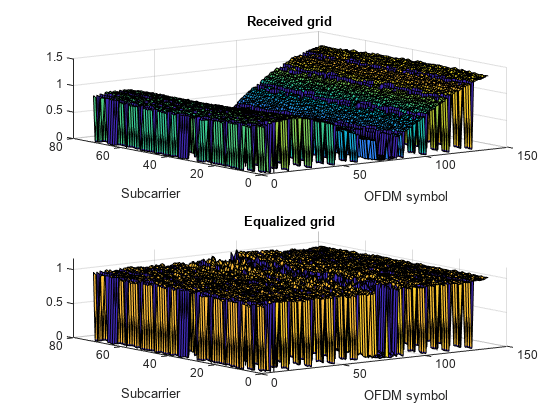lteEqualizeMMSE
MMSE equalization
Description
[ returns
equalized data in multidimensional array, out,csi]
= lteEqualizeMMSE(rxgrid,channelest,noiseest)out.
MMSE equalization is applied to the received data resource grid in
the matrix, rxgrid, using the channel information
in the channelest matrix. noiseest is
an estimate of the received noise power spectral density.
Alternatively, the input channelest can
be provided as a 3-D array of size NRE-by-NRxAnts-by-P,
and the input rxgrid can be provided as a matrix
of size NRE-by-NRxAnts. In this
case, the first two dimensions have been reduced to one dimension
by appropriate indexing through the frequency and time locations of
the resource elements of interest, typically for a single physical
channel. The outputs, out and csi,
are of size (N×M)-by-P.
Examples
Input Arguments
Output Arguments
Version History
Introduced in R2014a

